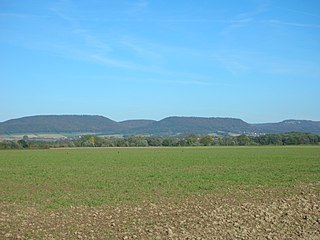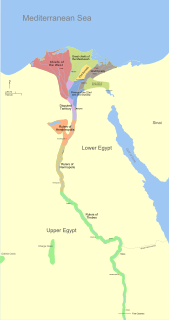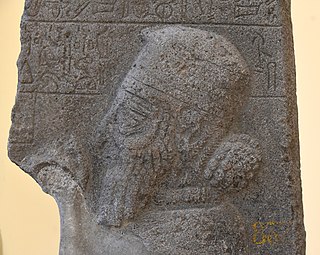 W
WThe Amelungsburg is a 292-metre (958 ft) high hill in the Lippe Uplands in central Germany, in the municipality of Dörentrup in the district of Lippe.
 W
WThe Amelungsburg is a former ringfort that is located on the Amelungsberg hill on the Süntel ridge in the district of Hameln-Pyrmont in the German state of Lower Saxony.
 W
WThe Babilonie is a hillfort of the La Tène culture at a height of 255.6 metres above sea level on the northern edge of a rounded hill in the Wiehen Hills above the Lübbecke village of Obermehnen in the district of Minden-Lübbecke in the German state of North Rhine-Westphalia. The name is derived from the Germanic baben in the lon i.e. "up in the woods".
 W
WThe Rock 1 of Bedolina, the so-called Bedolina Map, is a famous engraved prehistoric rock which is part of the Camonica valley petroglyph complex. It is known as being one of the most ancient topographic maps, interpreted as the depiction of cultivated plots, mountain paths and villages. The locality of Bedolina pertains to the Capo di Ponte municipality (BS-I), near the hamlet of Pescarzo. The area is included in the Seradina-Bedolina Archaeologic park, lying on a prominent terrace on the right slope of the Camonica valley, at an altitude of 530 m above the sea level. The rock, a flat surface of Permian sandstone polished by the Pleistocene glacier, is 9 m long and 4 m wide.
 W
WThe Late Bronze Age collapse was a transition period in the Near East, Anatolia, the Aegean region, North Africa, the Caucasus, the Balkans and the Eastern Mediterranean from the Late Bronze Age to the Early Iron Age, a transition which historians believe was violent, sudden, and culturally disruptive. The palace economy of the Aegean region and Anatolia that characterized the Late Bronze Age disintegrated, transforming into the small isolated village cultures of the Greek Dark Ages.
 W
WA chariot is a type of carriage driven by a charioteer, usually using horses to provide rapid motive power. Chariots were used by armies as transport or mobile archery platforms, for hunting or for racing, and as a conveniently fast way to travel for many ancient people.
 W
WChariot burials are tombs in which the deceased was buried together with their chariot, usually including their horses and other possessions. An instance of a person being buried with their horse is called horse burial.
 W
WThe Third Intermediate Period of ancient Egypt began with the death of Pharaoh Ramesses XI in 1070 BC, which ended the New Kingdom, and was eventually followed by the Late Period. Various points are offered as the beginning for the latter era, though it is most often regarded as dating from the foundation of the Twenty-Sixth Dynasty by Psamtik I in 664 BC, following the expulsion of the Nubian Kushite rulers of the Twenty-fifth Dynasty by the Assyrians under King Assurbanipal. The concept of a "Third Intermediate Period" was coined in 1978 by British Egyptologist Kenneth Kitchen.
 W
WThe history of the Caucasus region may be divided by geography into the history of the Northern Caucasus (Ciscaucasia), historically in the sphere of influence of Scythia and of Southern Russia, and that of the Southern Caucasus in the sphere of influence of Persia, Anatolia and Assyria.
 W
WThe Iron Age Cold Epoch was a period of unusually cold climate in the North Atlantic region, lasting from about 900 BC to about 300 BC, with an especially cold wave in 450 BC during the expansion of ancient Greece. It was followed by the Roman Warm Period.
 W
WNapata was a city of ancient Kush at the fourth cataract of the Nile. It is located approximately 1.5 kilometers from the right side of the river at the site of modern Karima, Sudan. It was the southernmost permanent settlement in the New Kingdom of Egypt and home to Jebel Barkal, the main Kushite cult centre of Amun. It was the sometime capital of the Twenty-fifth Dynasty of Egypt and, after its fall in 663 BC, of the Kingdom of Kush. In 593 BC, it was sacked by the Egyptians and the Kushite capital was relocated to Meroë. Even after this move, Napata continued to be the kingdom's primary religious centre. The city was sacked a second time by the Romans in 23 BC but was rebuilt and continued as an important centre of the Amun cult.
 W
WThe Negau helmets are 26 bronze helmets dating to c. 450 BC–350 BC, found in 1812 in a cache in Ženjak, near Negau, Duchy of Styria. The helmets are of typical Etruscan 'vetulonic' shape, sometimes described as of the Negau type. They were buried in c. 50 BC, shortly before the Roman invasion of the area. Helmets of the Negau type were typically worn by priests at the time of deposition of these helmets, so they seem to have been left at the Ženjak site for ceremonial reasons. The village of Ženjak was of great interest to German archaeologists during the Nazi period and was briefly renamed Harigast during World War II. The site has never been excavated properly.
 W
WThe Plain of Jars is a megalithic archaeological landscape in Laos. It consists of thousands of stone jars scattered around the upland valleys and the lower foothills of the central plain of the Xiangkhoang Plateau. The jars are arranged in clusters ranging in number from one to several hundred.
 W
WCornish promontory forts, commonly known in Cornwall as cliff castles, are coastal equivalents of the hill forts and Cornish "rounds" found on Cornish hilltops and slopes. Similar coastal forts are found on the north–west European seaboard, in Normandy, Brittany and around the coastlines of the British Isles, especially in Wales, Scotland and Ireland. Many are known in southwest England, particularly in Cornwall and its neighbouring county, Devon. Two have been identified immediately west of Cornwall, in the Isles of Scilly.
 W
WSitula, from the Latin word for bucket or pail, is the term in archaeology and art history for a variety of elaborate bucket-shaped vessels from the Iron Age to the Middle Ages, usually with a handle at the top. All types may be highly decorated, most characteristically with reliefs in bands or friezes running round the vessel.
 W
WIn archaeology a type site is a site that is considered the model of a particular archaeological culture. For example, the type site of the Pre-Pottery Neolithic A culture is Jericho, in the West Bank. A type site is also often the eponym. For example, the type site of the pre-Celtic/Celtic Bronze Age Hallstatt culture is the lakeside village of Hallstatt, Austria.
 W
WWarpalawa(s) was a late 8th century BC Late Hittite king of Tabal in south-central Anatolia. The political center of this Early Iron Age regional state was probably Tuwanuwa. Among other commemorative monuments, Warpalawas most notably commissioned the carving of the İvriz relief, a rock relief at the site of Ivriz near a spring, south of Tuwanuwa in the province of Konya. In the relief, he is depicted with the storm-god Tarhunzas. His attire in the relief is seen as an evidence for his kingdom's close affinity with the Phrygians. The relief is accompanied with a hieroglyphic Luwian inscription. The Tabalian king Urballa, mentioned in the Assyrian texts at the time of Tiglath-pileser III and Sargon II probably is Warpalawas.